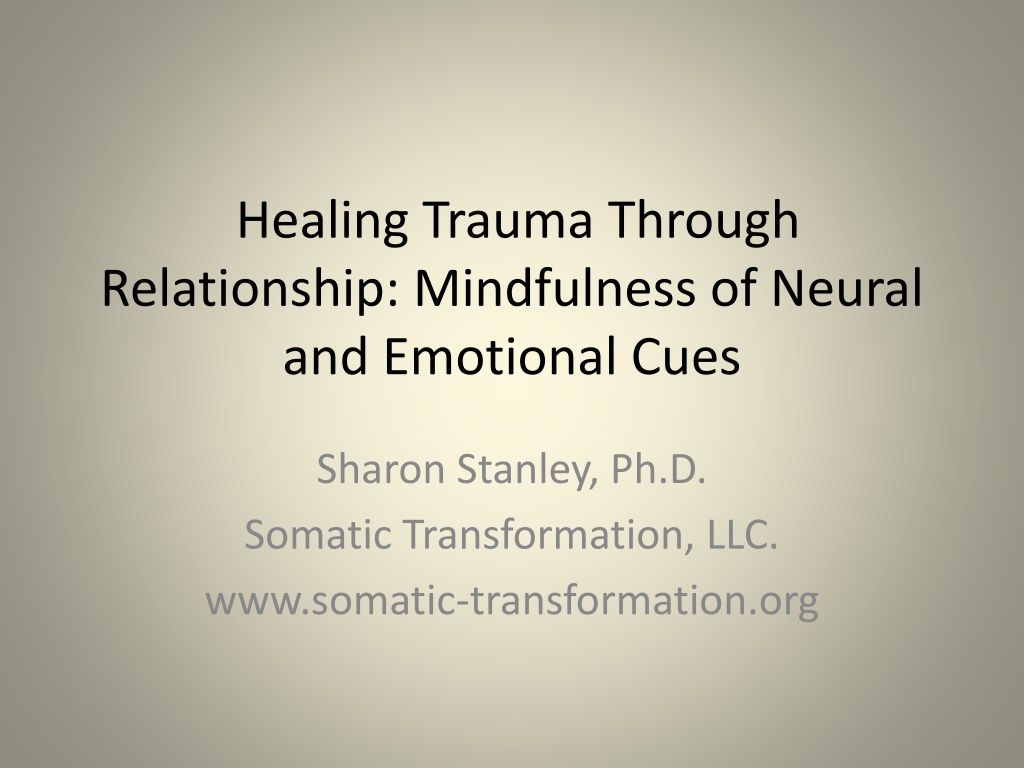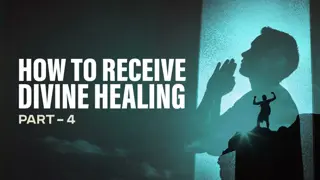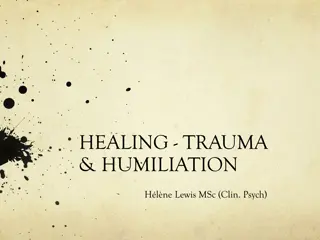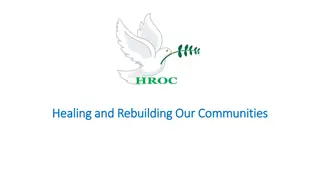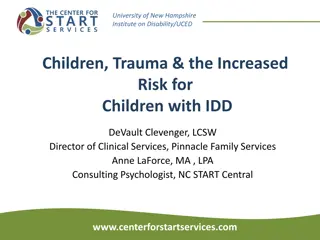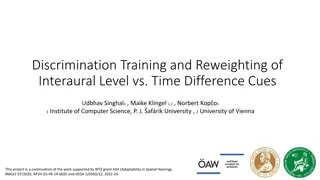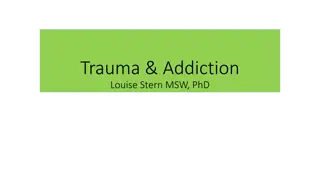Understanding and Applying Neural and Emotional Cues in Healing Trauma through Relationship
Explore the transformative approach of healing trauma through relationships, shifting from cognitive to bodily experiences. Learn about the role of the cerebral cortex, limbic system, and brain stem in processing emotions, and develop relational-based healing through intersubjective connections.
Download Presentation

Please find below an Image/Link to download the presentation.
The content on the website is provided AS IS for your information and personal use only. It may not be sold, licensed, or shared on other websites without obtaining consent from the author. Download presentation by click this link. If you encounter any issues during the download, it is possible that the publisher has removed the file from their server.
E N D
Presentation Transcript
Healing Trauma Through Relationship: Mindfulness of Neural and Emotional Cues Sharon Stanley, Ph.D. Somatic Transformation, LLC. www.somatic-transformation.org
Healing Trauma Through Relationship New Paradigm for Professional Healing Practices Emerging from Neuroscience A Shift from Left to Right Hemisphere A Shift from the Top Down (thoughts) to a Bottom Up (Bodily based experience A Shift from One Person To Two Person Psychology
Transforming Trauma Through the Bottom Up Left Hemisphere Logic Right Hemisphere Cortex Images, Reflection Compassion Empathy Limbic Emotional Circuits Seeking, fear, rage, lust, play, care, grief Sequence Brain Stem Mindful Sensory Based Perception Autonomic Nervous System Abstract Language
CEREBRAL CORTEX Organizes higher cortical intuitive ways of knowing Forms images LIMBIC SYSTEM Forms primitive emotions BRAIN STEM Perceives sensory information Organizes autonomic nervous system response RIGHT HEMISPHERE PROCESSING FROM THE BOTTOM UP Stanley (2015), Schore (2012)
Relational-Based Healing Develop the intersubjective field between two or more people. Communicate with bodily-based sensation and movement Facial expression and eye gaze Vocal prosody and tone of voice Gesture and touch
The Intersubjective Field We each have our own subjective experience of everything we have ever lived our lived experience . When two people are interested in their own and another s lived experience they create a connection between them. The intersubjective field is empathic foundation for healing trauma.
Neural and Emotional States of Trauma Neural States: Ventral Vagal Arousal calm, creative, social engagement Sympathetic Arousal fear, terror, horror and aggression Dorsal Vagal Arousal of immobility fuses with Sympathetic Arousal deadness, numbness, depression and dissociation
Neural and Emotional States of Trauma Neural States: Ventral Vagal Arousal calm, creative, social engagement Sympathetic Arousal fear, terror, horror and aggression Dorsal Vagal Arousal of immobility fuses with Sympathetic Arousal deadness, numbness, depression and dissociation
Six Somatic Practice of Mindfulness Embodiment Somatic awareness of sensory perception Somatic empathy relations are contingent, felt and led by facial expression Somatic inquiry exploration into the dissociated implicit memories of trauma Somatic interventions witnessing, movements, oscillation and imagery. Somatic reflection Meaning making
Somatic Awareness A form of mindfulness that focuses attention on bodily based phenomena Including sensation, movement, emotion, and images. Discerns the neural-emotional state in the moment allowing for a bodily based witness and a window of change. Engages people in a deep sense of feeling felt .
Somatic Inquiry Phenomenological method of exploring bodily based lived experience. Seeking dissociated memories in the context of the intersubjective field. Bringing empathy and compassion to inner disconnected states of trauma.
Somatic Intervention to Regulate Building awareness of pleasurable sensory experience, particularly vitality. Noticing uncomfortable sensory experience. Oscillating between the vitality and the sensations from trauma.
Somatic Interventions to Reconsolidate Trauma Develop and maintain the intersubjective field. Practice co-regulation to gain self-regulation Reconnect bodily based experience to healthy imagination.
Somatic Reflection A dialogue that explores the shared experience of the intersubjective field Meaning making that comes out of the shared wisdom of the bodily based connection. Re- engages the left hemisphere for more logical forms of knowledge
Reflection on Lived Experience 1. Recall the vivid moment of this presentation and notice the sensations of each. 2. What has been new learning for you in your experience? 3. How does this new learning affect you?
